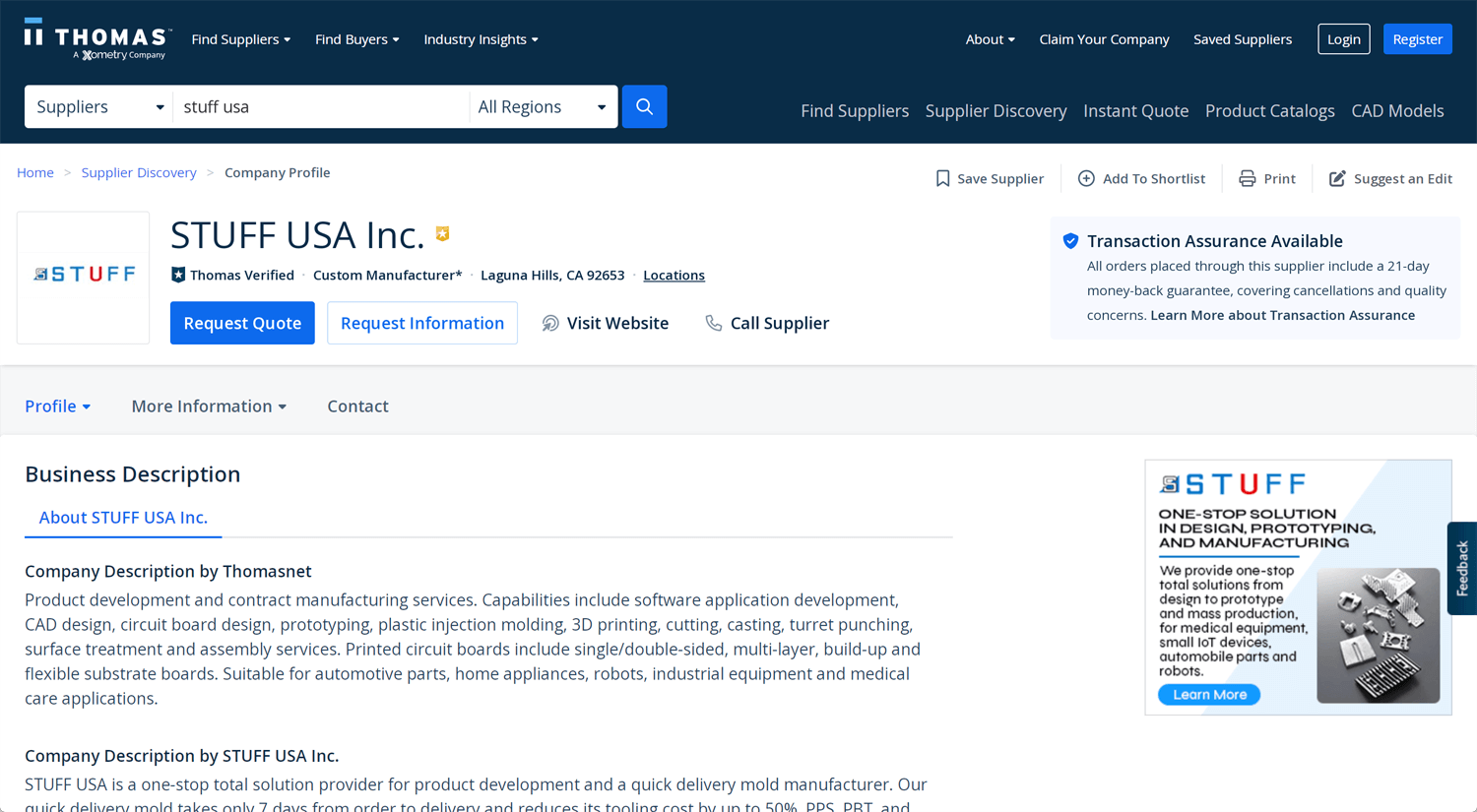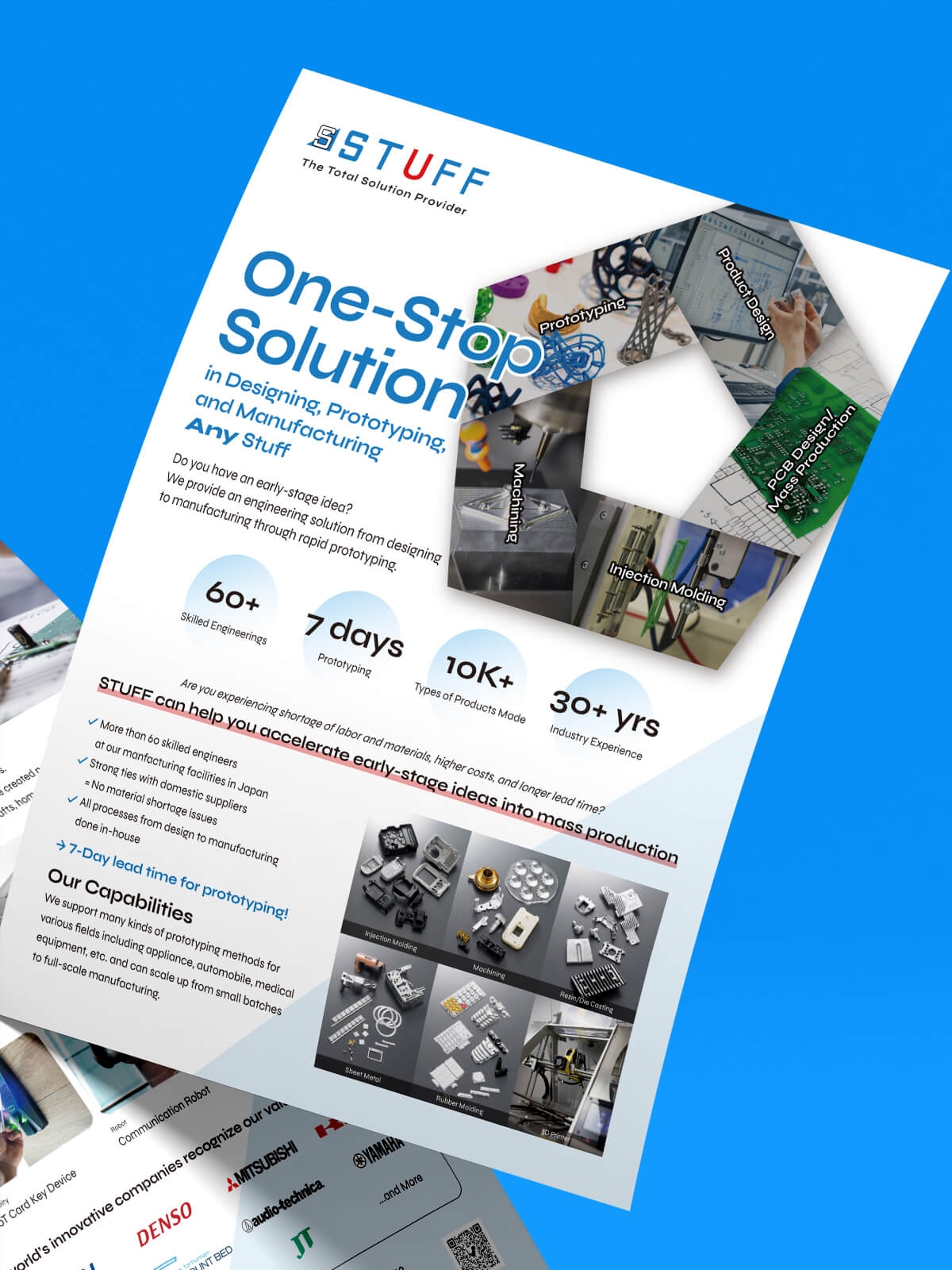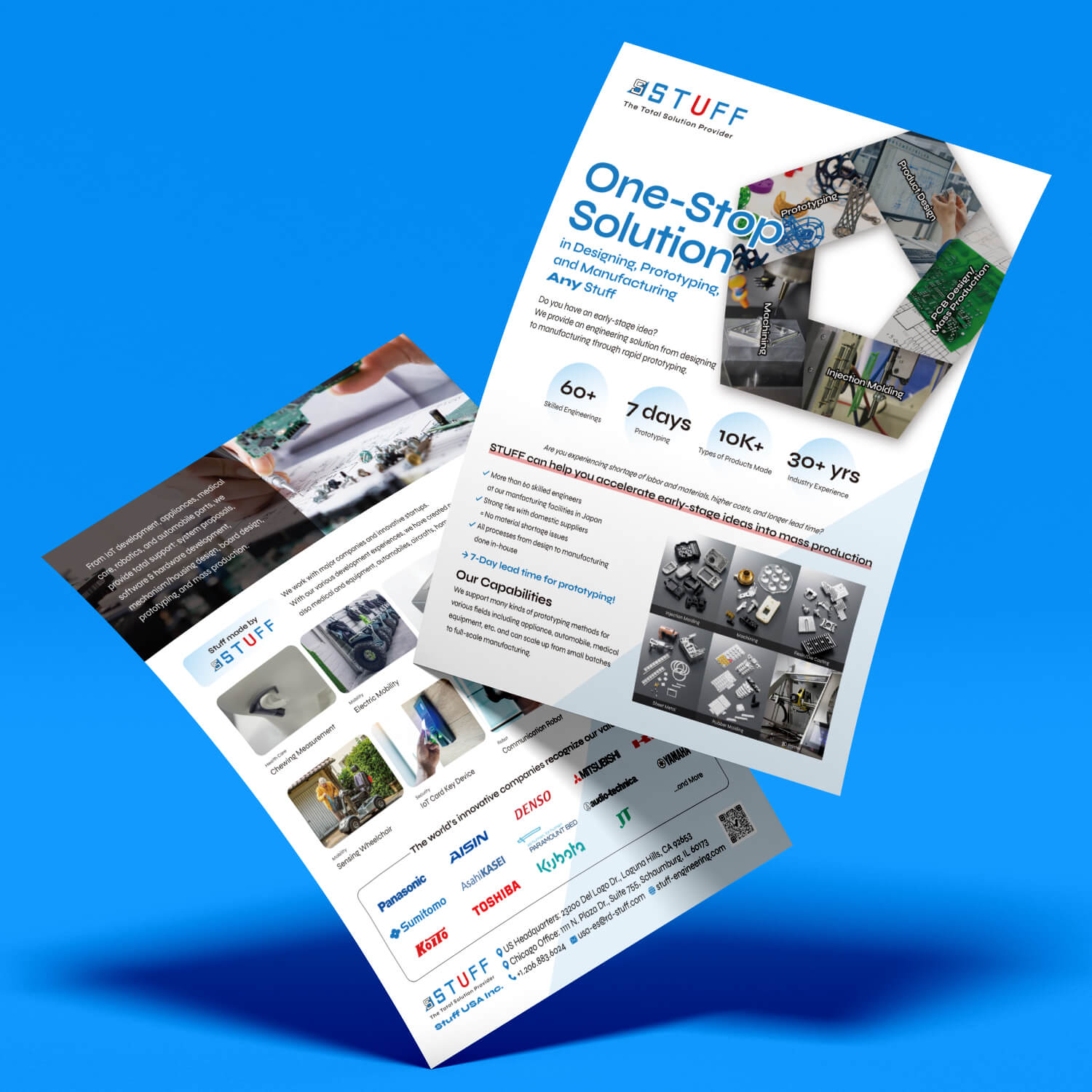May 3, 2024
What is Precision Machining: An Overview
POSTED BY
Team STUFF USA
In the meticulous realm of manufacturing, where tolerances are measured in microns and perfection is not a dream but a daily pursuit, stands the art of precision machining. It’s a discipline where cutting-edge technology and human ingenuity intertwine to sculpt functional masterpieces from raw materials.
Precision machining transcends the mere removal of material. It’s about achieving exceptional accuracy, consistency, and surface quality, often at scales invisible to the naked eye. Imagine components so precise they could fit within the width of a human hair, their surfaces like polished mirrors reflecting the meticulous effort poured into their creation.
This level of control unlocks a vast world of possibilities. From the delicate gears in a high-end watch to the life-saving instruments in a surgical suite, precision-machined components are important in powering countless industries. They ensure not only functionality but also reliability, safety, and the smooth operation of complex machinery.
Achieving such microscopic marvels is no singular feat. Precision machining relies on a variety of techniques, each playing a crucial role in the final performance.
Key Processes in Precision Machining
Precision machining consists of multiple processes, each playing a distinct yet interconnected role in the creation of components that define innovation. Here, we delve into the intricate processes that form the backbone of precision machining, unraveling the secrets behind CNC machining, the excellence of cutting tools, the artistry of surface finishes, and the finesse required to tackle complexity.
CNC Machining
At the heart of precision machining lies the digital precision of Computer Numerical Control (CNC) machining. This revolutionary process transcends traditional machining by utilizing computerized controls to manipulate tools and machinery with unparalleled accuracy. It transforms digital designs into tangible reality, where the precision is measured in microns. CNC machining is the embodiment of precision, where the fusion of software and machinery orchestrates the creation of components with exacting specifications.
CNC machining is not just a tool; it is the cornerstone of precision manufacturing. Its role extends beyond the shop floor; it is the architect of accuracy, sculpting raw materials into components that form the backbone of industries. The ability to replicate intricate designs with consistency elevates CNC machining to an indispensable position in precision manufacturing, where reliability and precision are non-negotiable.
Tooling Excellence
In the realm of precision machining, the tools wielded are the artists’ brushes, and the materials are the canvases. Cutting tools are precision-engineered instruments crafted from high-performance materials, each chosen for its unique properties. Carbide, ceramics, and high-speed steel are the artisans’ palette, defining the durability, sharpness, and longevity of the cutting tools. The selection of the right tool and material is a meticulous process, ensuring they harmonize to achieve precision in every cut.
The importance of tooling excellence in precision machining cannot be overstated. Cutting tools are the unsung heroes, shaping materials with surgical precision. Their geometry, composition, and edge design are critical factors that impact the final product’s quality. In precision machining, the marriage of advanced cutting tools and materials is the alchemy that transforms raw materials into components that meet the most stringent specifications.
Surface Finish Mastery
The surface finish of a machined component is the tactile signature of precision machining. It goes beyond aesthetics; it is a testament to the meticulous craftsmanship that defines the product’s quality. The smoothness, texture, and uniformity achieved in surface finishes are paramount, impacting not only the visual appeal but also the functionality and performance of the final product.
Mastery of surface finishes requires a nuanced understanding of techniques that go beyond the mechanical. From precision grinding to abrasive polishing, each technique is a brushstroke in achieving superior finishes. In precision machining, the surface is not just a canvas; it is a reflection of the precision embedded in every layer, a testament to the commitment to excellence.
STUFF USA Inc. proudly stands as a Thomas Verified Supplier, offering a one-stop solution for physical product development, capable of Precision Machining.
Materials Matter in Precision Machining
Precision Machining is widely used to produce a wide range of parts with a high level of accuracy. When it comes to precision machining, material compatibility is one of the most important factors.
Selection Criteria for Machining Materials
Hardness and Durability
The first cornerstone in the selection of materials for precision machining is the consideration of hardness and durability. These characteristics are pivotal as they directly influence how a material responds to the cutting and shaping processes. Hardness is a measure of a material’s resistance to deformation, and in precision machining, it ensures that the material retains its form even under the forces exerted during the machining process. Durability extends beyond hardness, encompassing the material’s ability to withstand wear and abrasion, contributing to the longevity of the finished component. The delicate dance between hardness and durability forms the basis for the selection of materials that will undergo the precision crafting of machining.
Machinability and Workability
While hardness and durability set the foundation, machinability, and workability define how a material interacts with the machining process. Machinability is a measure of how easily a material can be cut, shaped, and finished, directly impacting the efficiency of the machining process. Workability, on the other hand, encompasses a broader spectrum, considering the ease with which a material can be manipulated and transformed into intricate forms. In precision machining, the delicate balance between machinability and workability ensures that the chosen material not only meets structural requirements but also lends itself to the precision required for intricate component production.
Innovations in Material Usage
High-Performance Alloys
The landscape of precision machining is continually evolving, and at its forefront are high-performance alloys, heralding a new era in material innovation. These alloys are meticulously engineered to exhibit enhanced properties, marrying strength, hardness, and corrosion resistance in a harmonious blend. In precision machining, high-performance alloys push the boundaries, enabling the creation of components that demand exceptional mechanical properties. The innovation lies not only in the formulation of these alloys but also in their application, where they become the raw canvas for precision crafting.
Advanced Composite Materials
As precision machining evolves, so does the canvas of materials, with advanced composite materials emerging as a testament to ingenuity. Composites, combining different materials to harness their strengths, open new avenues for precision machining. These materials often exhibit superior strength-to-weight ratios, thermal stability, and corrosion resistance. In precision machining, the integration of advanced composites ushers in a new era of lightweight yet robust components, pushing the boundaries of what can be achieved in terms of both performance and efficiency.
In the process of precision machining, material selection is one of the most important considerations, where hardness and durability set the stage, machinability, and workability dictate the rhythm, and innovations in material usage chart the course toward new horizons. Precision machining, at its core, is the art of transforming carefully chosen materials into components that stand as masterpieces of engineering and craftsmanship.
Precision Machining and Advanced Technologies
Integration of advanced technologies like automation, Robotics, and integration of Industry 4.0 stands as a testament to the industry’s commitment to innovation in the ever-evolving landscape of precision machining. Here is how automation and other advanced technologies reshape the precision machining paradigm.
Role of Automation
The infusion of robotics into precision manufacturing heralds a transformative era. Robotics, with its unparalleled precision and repeatability, becomes a strategic ally in the precision machining process. These automated systems excel in executing repetitive tasks with microscopic accuracy, minimizing errors, and maximizing efficiency. In precision machining, robots take on roles ranging from material handling to intricate machining operations, where their tireless precision aligns seamlessly with the demands of creating components with exacting specifications. The synergy between human expertise and robotic precision elevates the entire precision machining process, resulting in higher throughput and reduced production costs.
The impact of robotics on precision machining efficiency is profound. Automated systems work tirelessly around the clock, ensuring consistent and high-quality production. The elimination of manual errors enhances overall precision, contributing to the creation of components with minimal variations. Efficiency is not solely measured in speed but also in the repeatability and reliability that robots bring to the process. The marriage of human expertise with robotic precision creates a harmonious workflow, where each complements the other, leading to enhanced overall efficiency in precision manufacturing.
Industry 4.0 Integration
The advent of Industry 4.0 introduces a new era of connectivity and intelligence in precision machining. Smart manufacturing, driven by interconnected systems and real-time data exchange, becomes the cornerstone of Industry 4.0 integration. In precision machining, machines communicate seamlessly, creating a networked ecosystem where data flows seamlessly across the production line. This connectivity allows for real-time adjustments, predictive maintenance, and adaptive manufacturing strategies. Smart manufacturing, as part of Industry 4.0, transforms precision machining from a static process to a dynamic, data-driven ecosystem.
Real-time monitoring and data analytics emerge as powerful tools in the precision machining arsenal. Sensors and monitoring devices embedded in machinery collect vast amounts of data during the machining process. This data, in real-time, provides insights into the performance of machines, the quality of components being produced, and the overall efficiency of the production line. Data analytics, driven by advanced algorithms, transforms this raw data into actionable insights. Predictive maintenance, quality control, and process optimization become not just possibilities but integral components of precision machining, ensuring continuous improvement and adaptability in the face of changing requirements.
Conclusion
In the dynamic intersection of precision machining, where the synergy of traditional craftsmanship and cutting-edge technology takes center stage, the incorporation of advanced tools stands as the pinnacle of innovation. From the meticulous control of CNC machining to the artistic finesse applied to surface finishes and the discerning selection of materials, each element plays a crucial role in shaping exceptionally functional components. The infusion of robotics and unwavering adherence to Industry 4.0 principles elevate precision machining into a responsive, data-driven system, ensuring both efficiency and unwavering consistency. Within this ever-evolving field, precision machining transcends being a mere process; it embodies an enduring commitment to excellence, seamlessly harmonizing technology and human expertise to forge engineering masterpieces.


